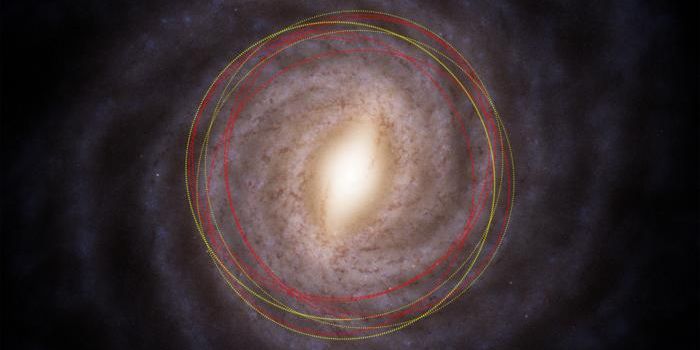Explosion From Two Young Colliding Stars Discovered
Half of a millennium ago, two young stars (dubbed protostars) located in the in the Orion constellation were gravitationally attracted to one another and eventually slammed into one another, either by side-swiping each other or by colliding head-on.
The event caused a massive explosion in the Orion Molecular Cloud 1 (OMC-1) approximately 1,350 light years away from Earth, and it was observed by astronomers via the Atacama Large Millimeter/submillimeter Array (ALMA) in Northern Chile.
Image Credit: ALMA (ESO/NAOJ/NRAO), J. Bally/H. Drass et al.
Published in The Astrophysical Journal, a paper describing the event notes how the explosion exhibited the same amount of energy intensity of our Sun over the course of 10 million years. The event was also described as exhibiting colorful “streamers” ejecting from the source of the collision.
The power from the explosion was so great that it sent debris and other protostars in the star-forming OMC-1 region into all directions at speeds of nearly 93 miles per second.
Related: Hubble spies on a spectacular star explosion
The light given off by the explosive event is seen in the high-resolution images in different colors. The researchers indicate that the bluer light comes from gasses traveling more quickly, while the redder light comes from gasses traveling more slowly.
While stellar explosions are normally seen at the end of a star’s life cycle in the form of supernovae, this is an interesting exception because it’s quite the opposite. These were young stars at just the beginning of their life cycle when the collision occurred and produced this incredibly bright cosmic explosion.
For what it’s worth, remnants from these kinds of explosions only last a few centuries. That said, being that it’s already 500 years old, astronomers might only have a few more centuries longer to observe it before most trace evidence is gone. Observing it can help us learn more about the physics of colliding stars, especially at a young age.
Source: Gizmodo









